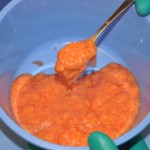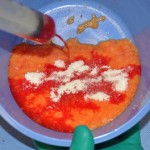
But the age of enlightenment has come to fat transfer. Considerable research efforts have been made in plastic surgery that has led to the widespread clinical use of fat grafting with improved volume retention results. This is particularly evidenced by the rollout of devices and machines to help with fat processing (cleaning and washing) and transfer. When you factor in that most fat sites in the body are invested with high numbers of stem cells, the interest in the science and expanded use of fat transplantation becomes more appealing.

My current open method is a common one and consists of a strainer to remove excess fluid by gravity, a Lactated Ringer’s solution wash and then manually placing it into syringes for injection. One of the current advantages of an open approach is the ability to add differing components to the graft. While it is unclear exactly what ‘stimulants’ may be beneficial for fat grafting, the concept is theoretically appealing.

The flip side of fat processing is that of the donor site. Which part of the human body has the best quality fat?Which donor site offers fat with higher numbers of stem cells? What type of fat will survive the best after transfer? The scientific answer is that no one knows. Convenience is the usual reason a fat donor site is used or one in which the patient most highly wants the fat reduced. Often times it is a simple matter of volume. The amount needed for augmentation requires a donor site that has two or three times the volume to provide due to loss in the processing and concentration method. In facial grafting due to the low volume needed, the number of donor options is considerable. For high volume fat transfers such as buttock augmentation, every donor site the patient has may need to be used. The by-product of that need is that they are also going to get a good liposuction reduction result.
Injected fat has many body uses from body contouring to facial rejuvenation. For the body, buttock augmentation and breast reconstruction (lumpectomy defects) are being widely done. Fat breast augmentations are being approached more cautiously but is gaining some momentum also. The other good body use is that of hand rejuvenation, using the injected fat to fill hollows between the extensor tendons and to camouflage prominent veins. The face continues to be a rich and diverse area for fat injections from lipoatrophy to rejuvenation through volume restoration.
The future of injected fat grafting is bright with continued refinements in technology a certainty. With these technologic improvements will come better clinical results and new clinical uses not yet envisioned.
Dr. Barry Eppley
Indianapolis Indiana


